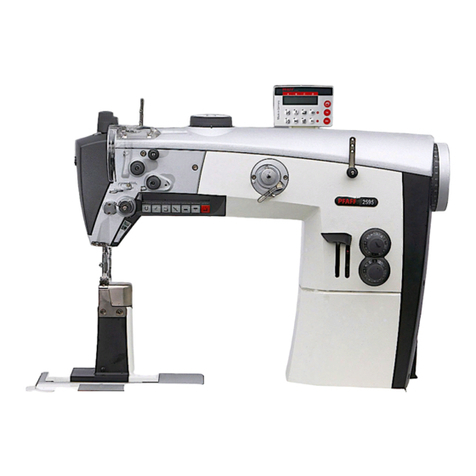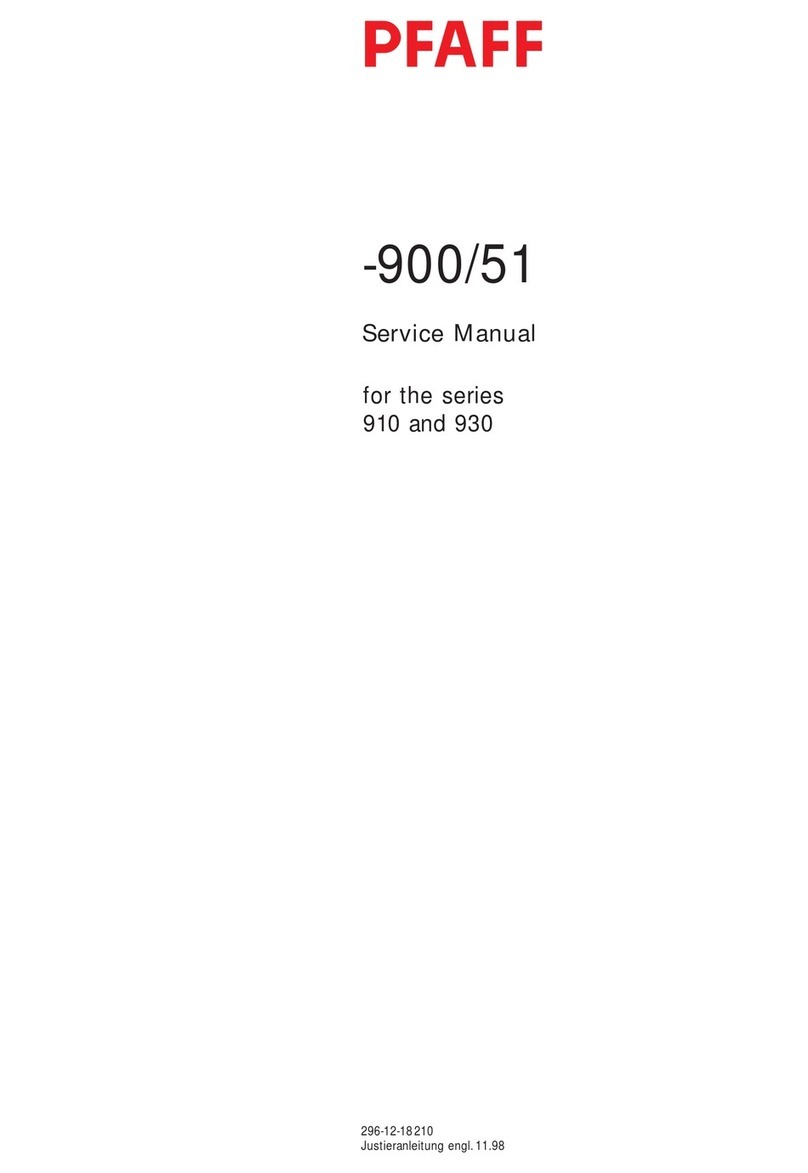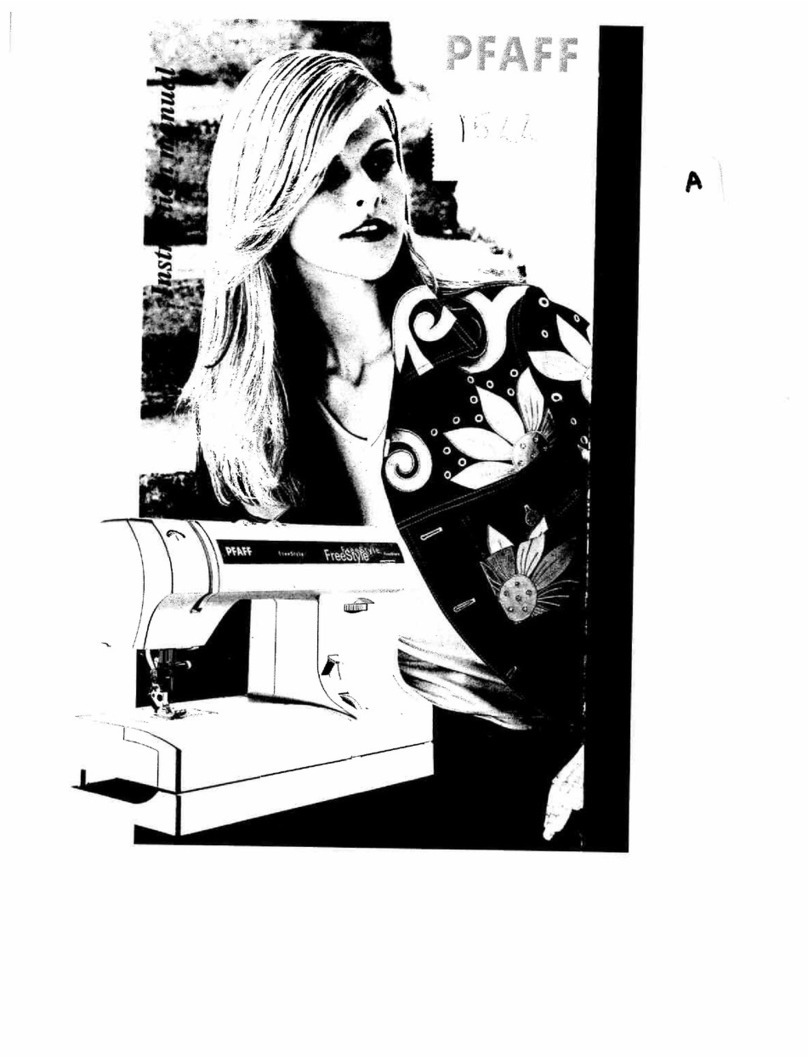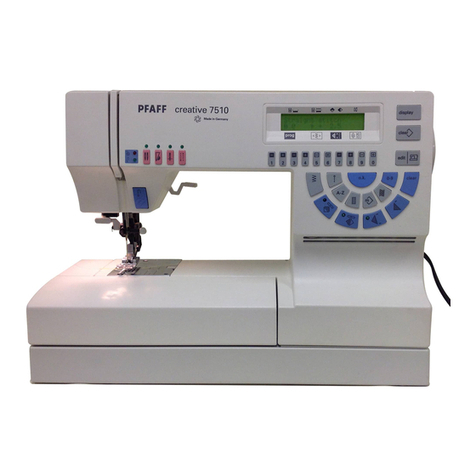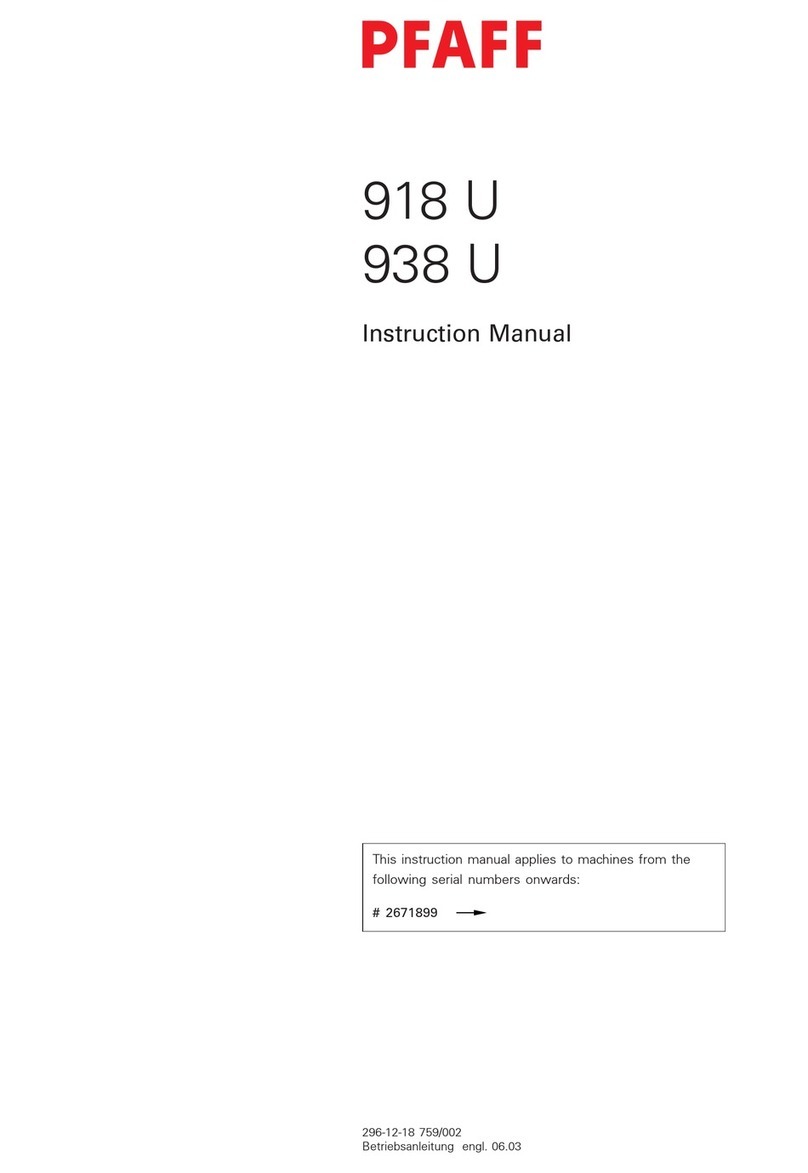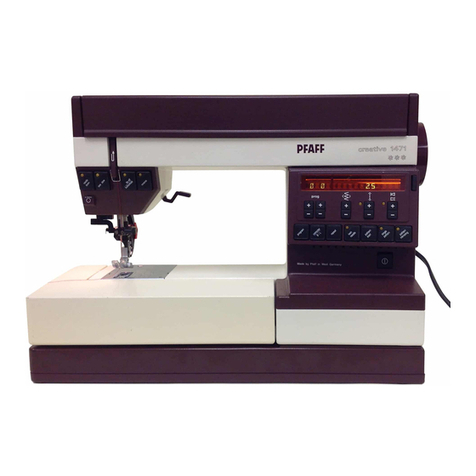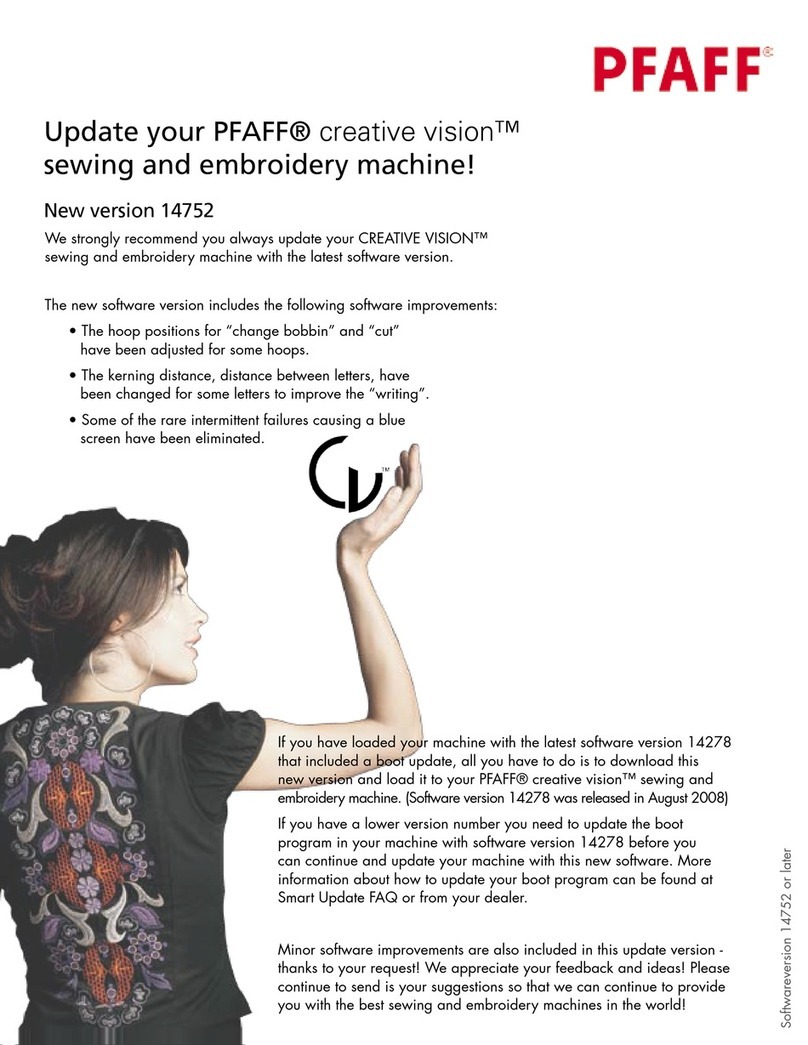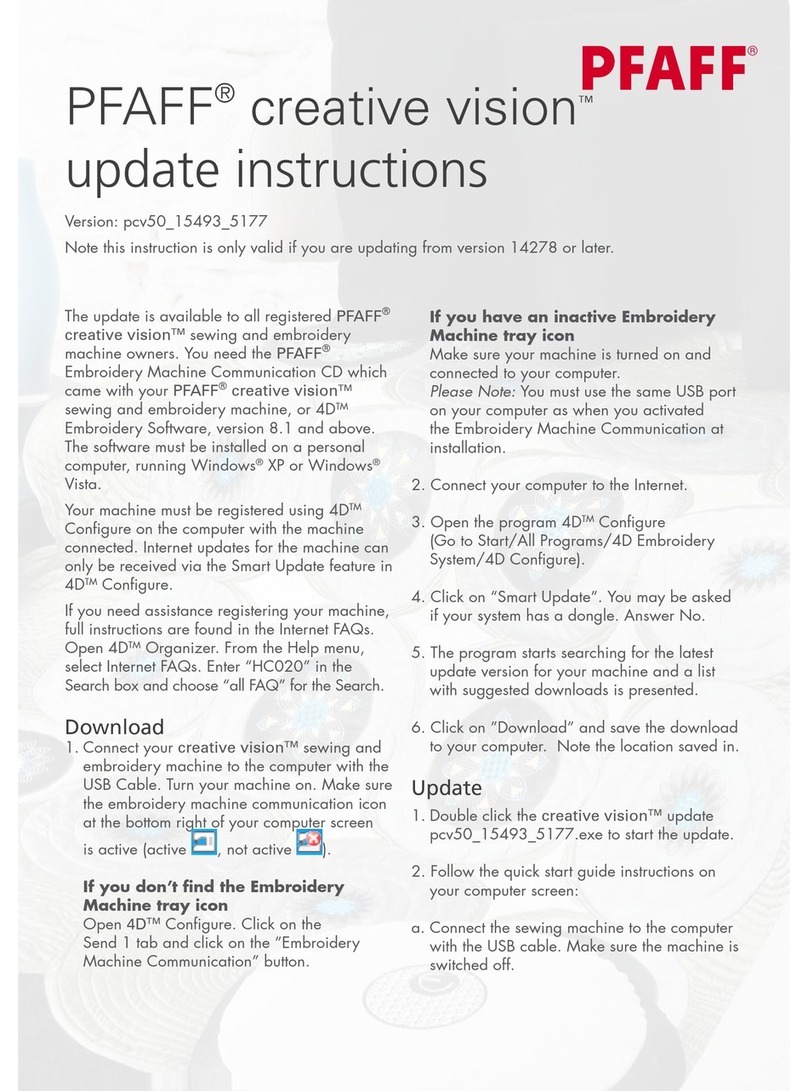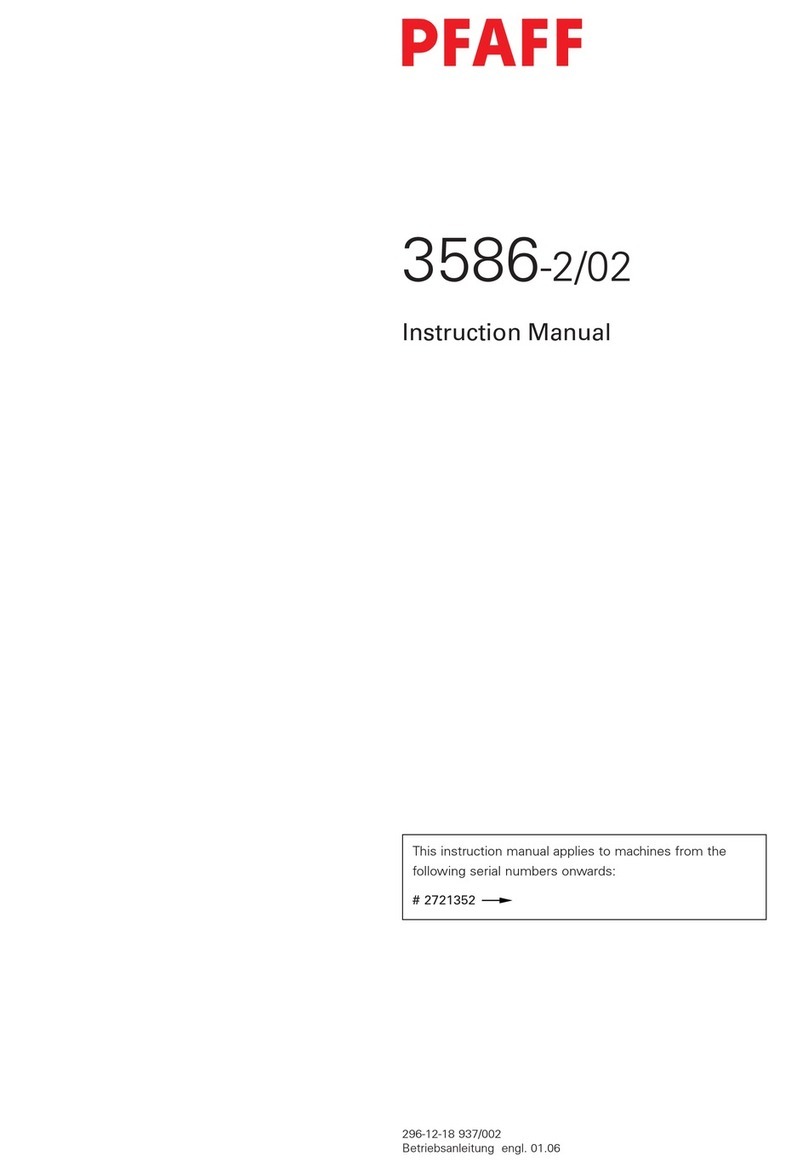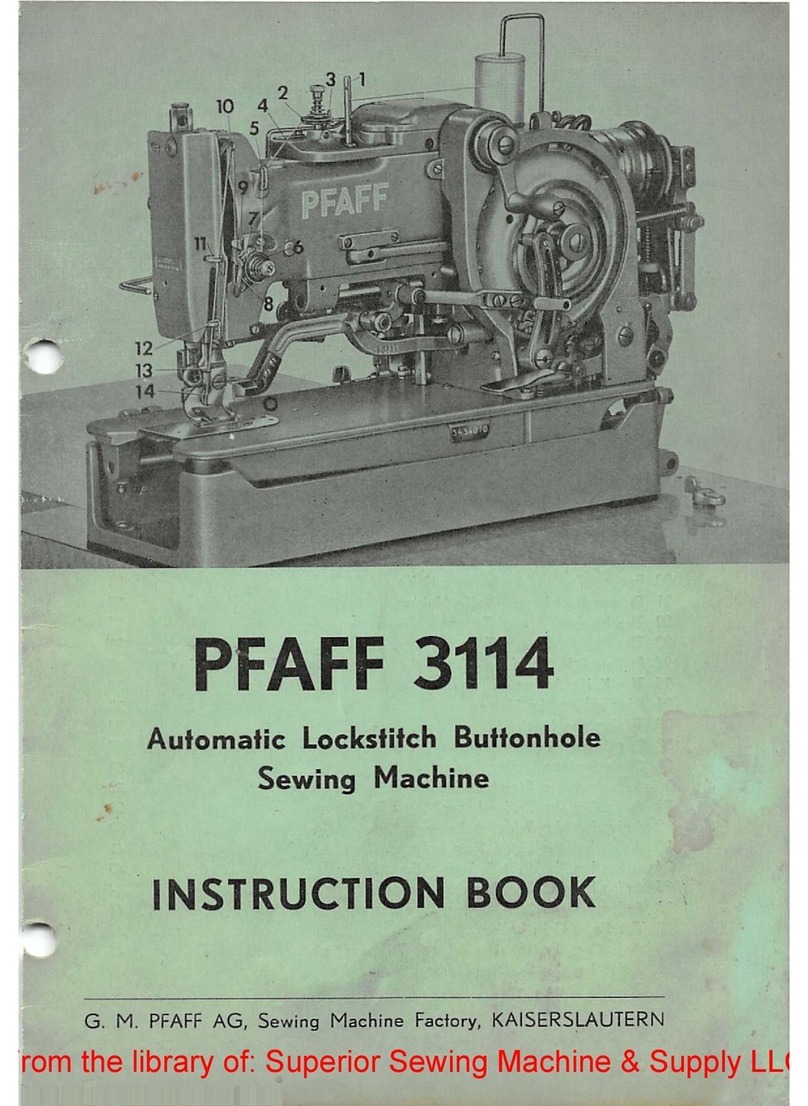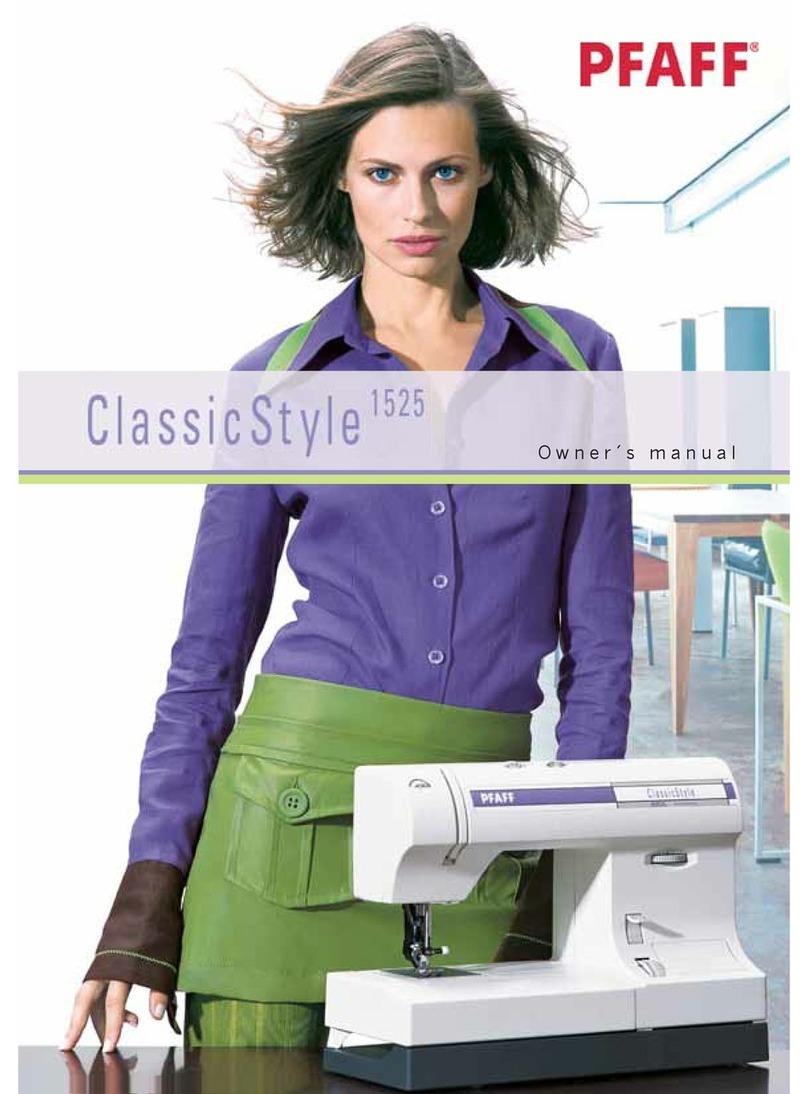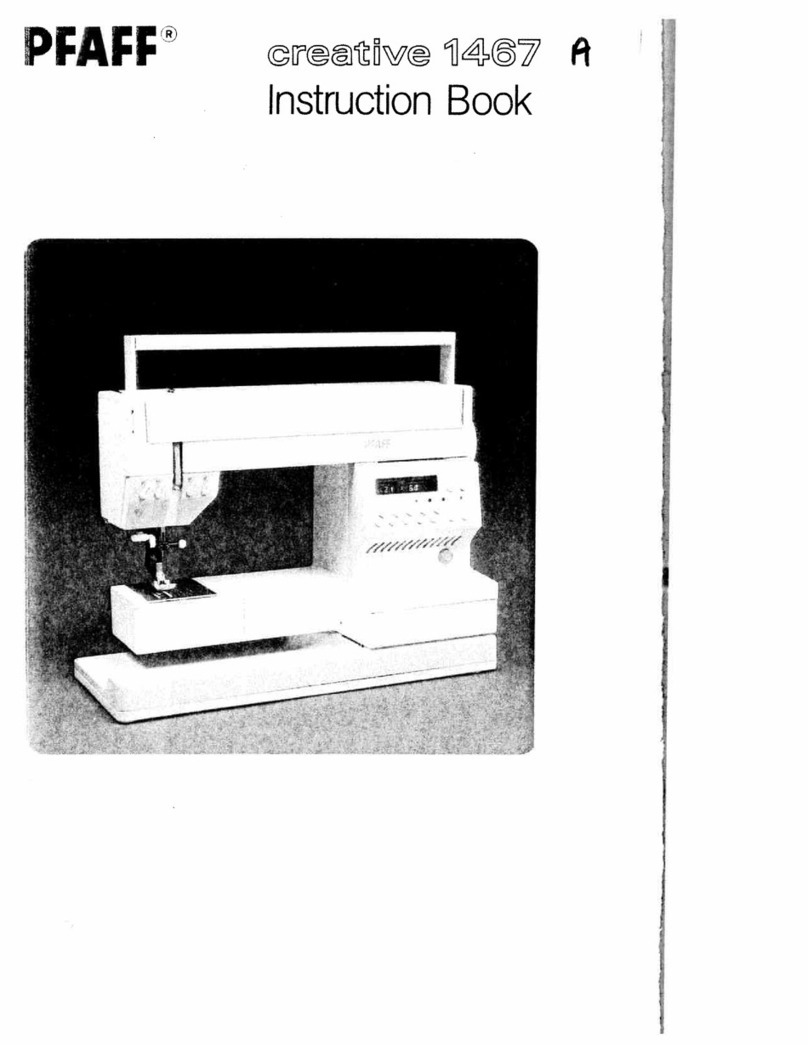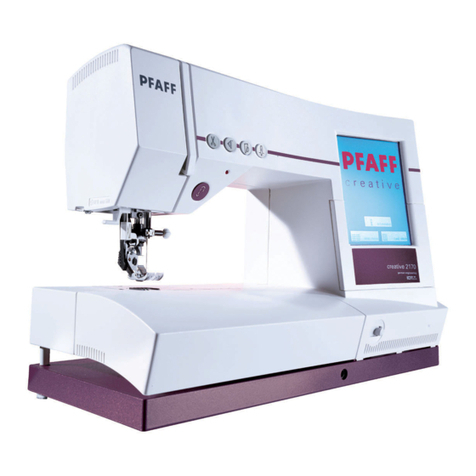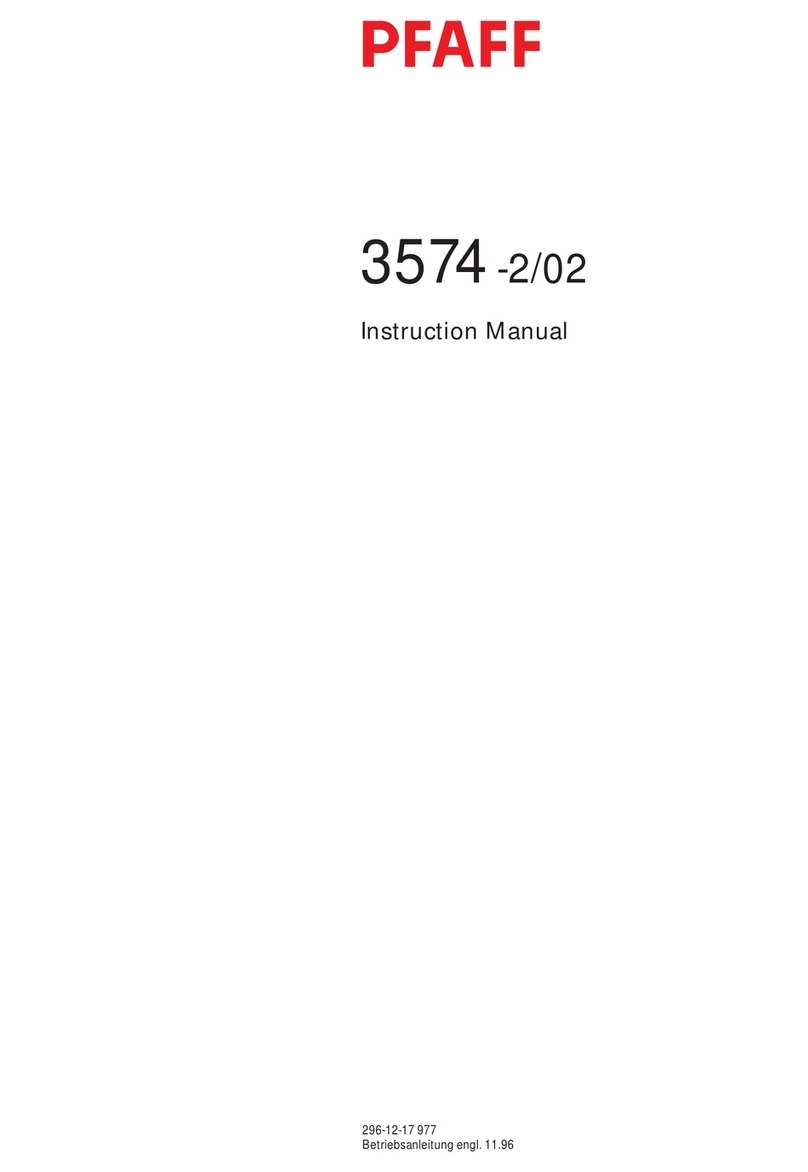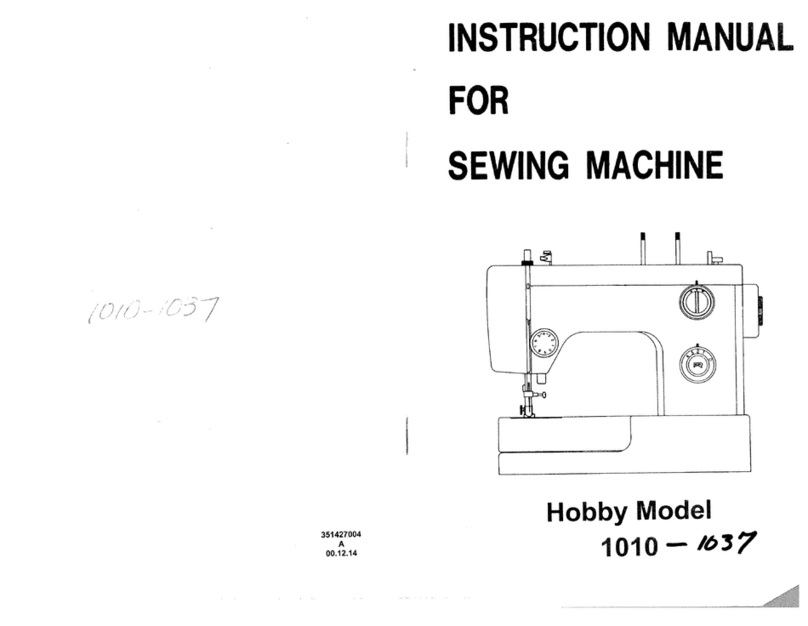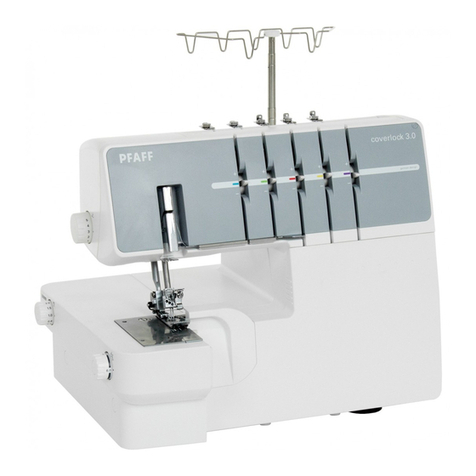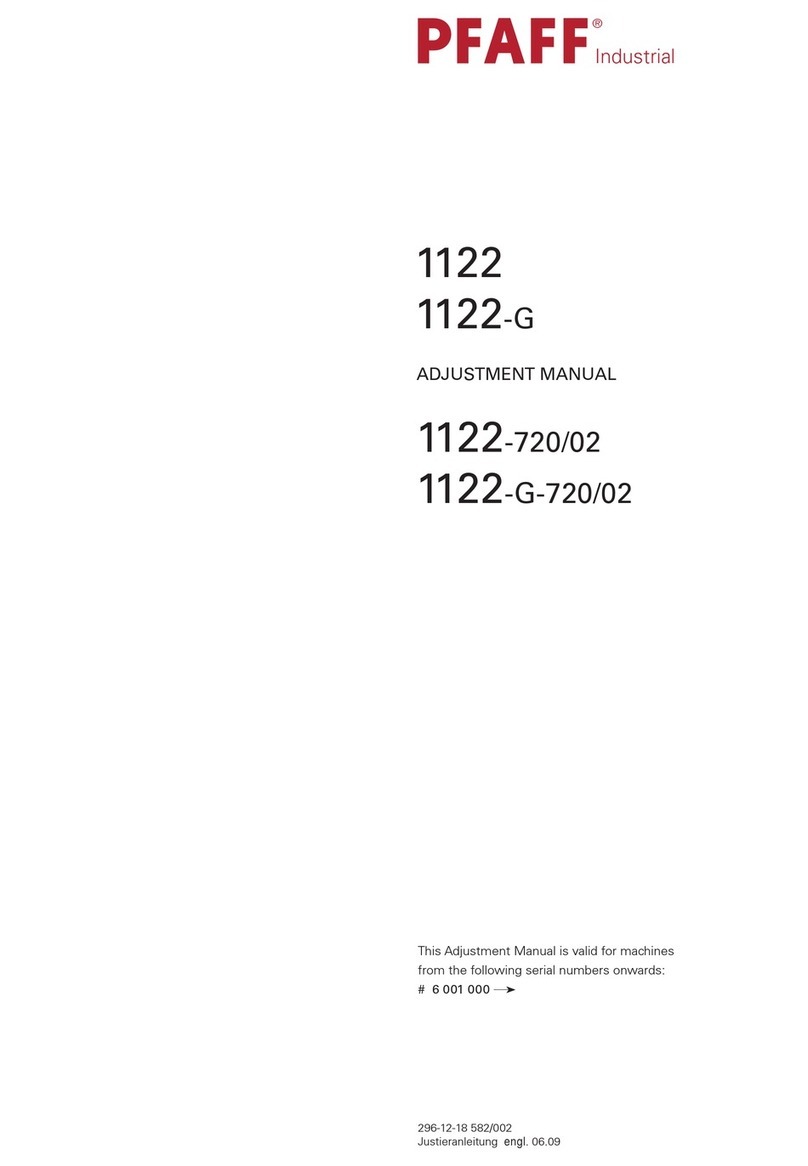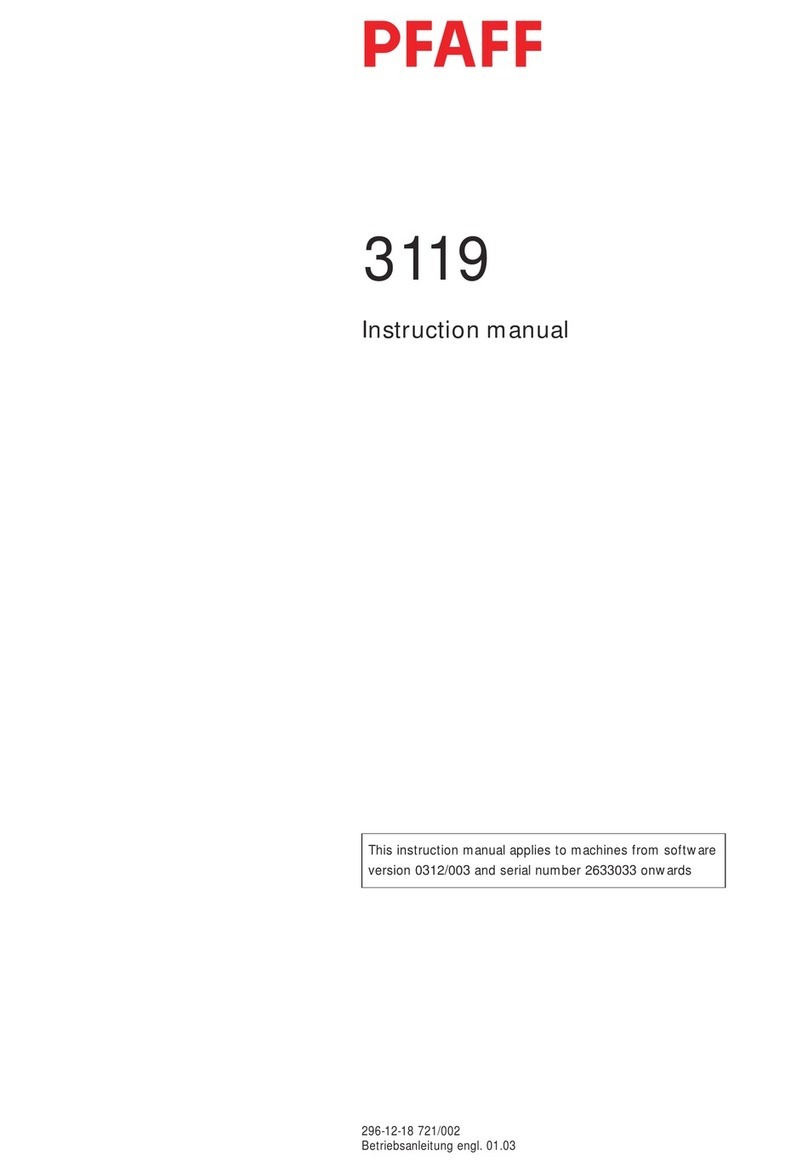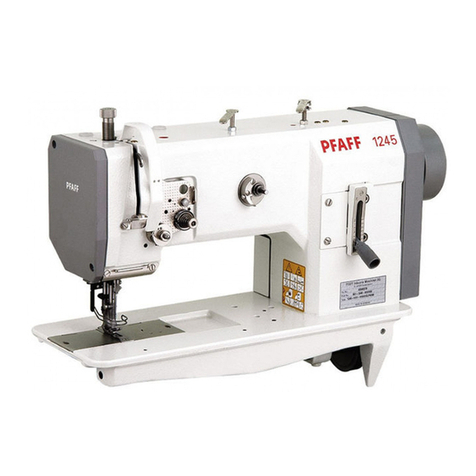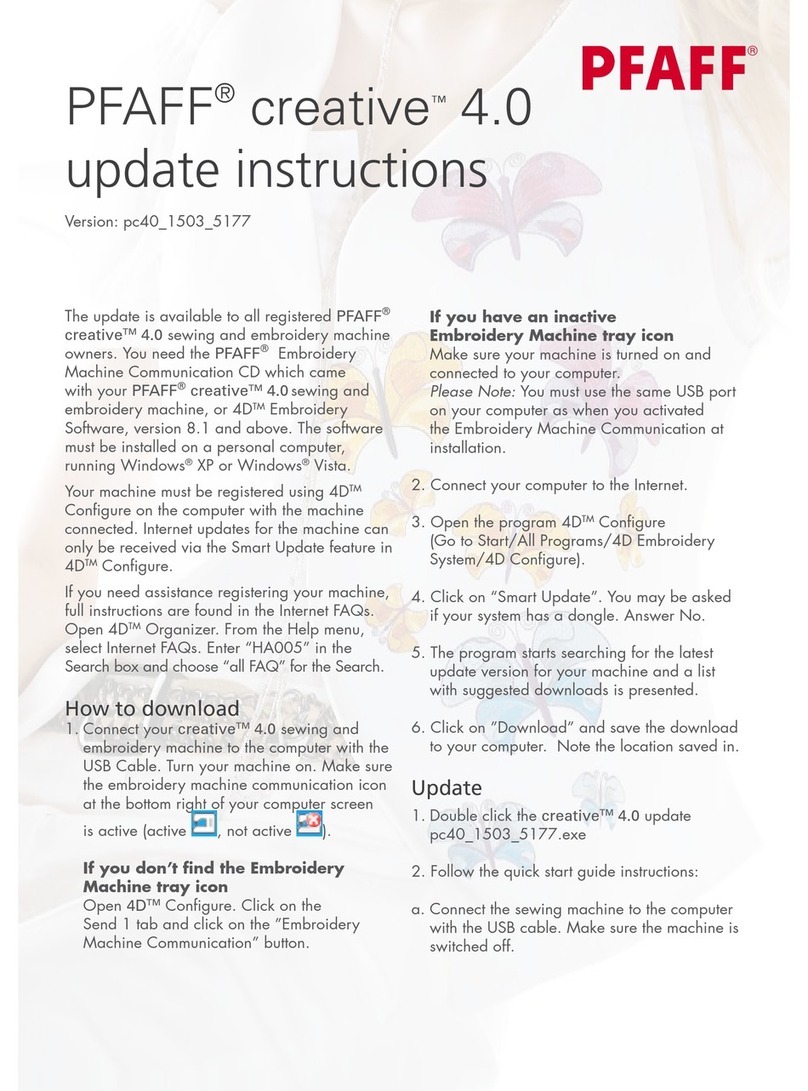Contents
Contents ...............................................................................Chapter - Page
9Preparation ............................................................................................................... 9 - 1
9.01 Inserting the needle ................................................................................................... 9 - 1
9.02 Winding the bobbin thread/ adjusting the thread tension .......................................... 9 - 2
9.03 Removing/Inserting the bobbin case.......................................................................... 9 - 3
9.04 Inserting the bobbin case / Adjusting the bobbin thread tension ............................... 9 - 3
9.05 Threading the needle thread / Adjusting the needle thread tension........................... 9 - 4
9.06 Adjusting the stitch length ......................................................................................... 9 - 5
10 Care and maintenance........................................................................................... 10 - 1
10.01 Cleaning the machine .............................................................................................. 10 - 1
10.02 Filling the oil reservoir (PFAFF 1181 and 1183 only) ................................................ 10 - 2
11 Adjustment ............................................................................................................. 11 - 1
11.01 Notes on adjusting ................................................................................................... 11 - 1
11.02 Tools, gauges and other accessories for adjusting .................................................. 11 - 1
11.03 Abbreviations ........................................................................................................... 11 - 1
11.04 Checking and adjusting aids..................................................................................... 11 - 2
11.05 Adjusting the basic machine ................................................................................. 11 - 3
11.05.01 Basic position of the machine drive ......................................................................... 11 - 3
11.05.02 Preadjusting the needle height ................................................................................ 11 - 4
11.05.03 Bottom feed neutral position ................................................................................... 11 - 5
11.05.04 Neutral position of the needle feed (only on PFAFF 1051 and 1181) ....................... 11 - 6
11.05.05 Bottom feed lifting motion ....................................................................................... 11 - 7
11.05.06 Bottom feed dog height........................................................................................... 11 - 8
11.05.07 Feed dog motion of bottom feed dog ...................................................................... 11 - 9
11.05.08 Feeding motion of needle feed (only on PFAFF 1051 and 1181) ............................. 11 -10
11.05.09 Needle in needle hole center (only on PFAFF 1053 and 1183) ................................ 11 -11
11.05.10 Needle to needle hole centre (on PFAFF 1051 and PFAFF 1181) ............................ 11 -12
11.05.11 Synchronous strokes of needle- and drop feed
(only on PFAFF 1051 and PFAFF 1181) ..................................................................... 11 -13
11.05.12 Hook shaft bearing and backlash ............................................................................. 11 -14
11.05.13 Hook lubrication (only for PFAFF 1181 and 1183) .................................................... 11 -15
11.05.14 Needle rise, hook-to-needle clearance, needle height and bobbin case
position finger .......................................................................................................... 11 -16
11.05.15 Thread check spring and slack thread regulator ....................................................... 11 -17
11.05.16 Position of knee lever .............................................................................................. 11 -18
11.05.17 Knee lever stop ........................................................................................................ 11 -19
11.05.18 Bobbin winder.......................................................................................................... 11 -20
11.05.19 Limiting the stitch length ......................................................................................... 11 -21
11.05.20 Presser foot pressure .............................................................................................. 11 -22
11.05.21 Modifying the needle bar stroke .............................................................................. 11 -23
11.06 Adjusting the thread trimmers -900/24................................................................. 11 -24
11.06.01 Magnet setting......................................................................................................... 11 -24
11.06.02 Lateral alignment of the thread catcher ................................................................... 11 -25
11.06.03 Knife position ........................................................................................................... 11 -26
